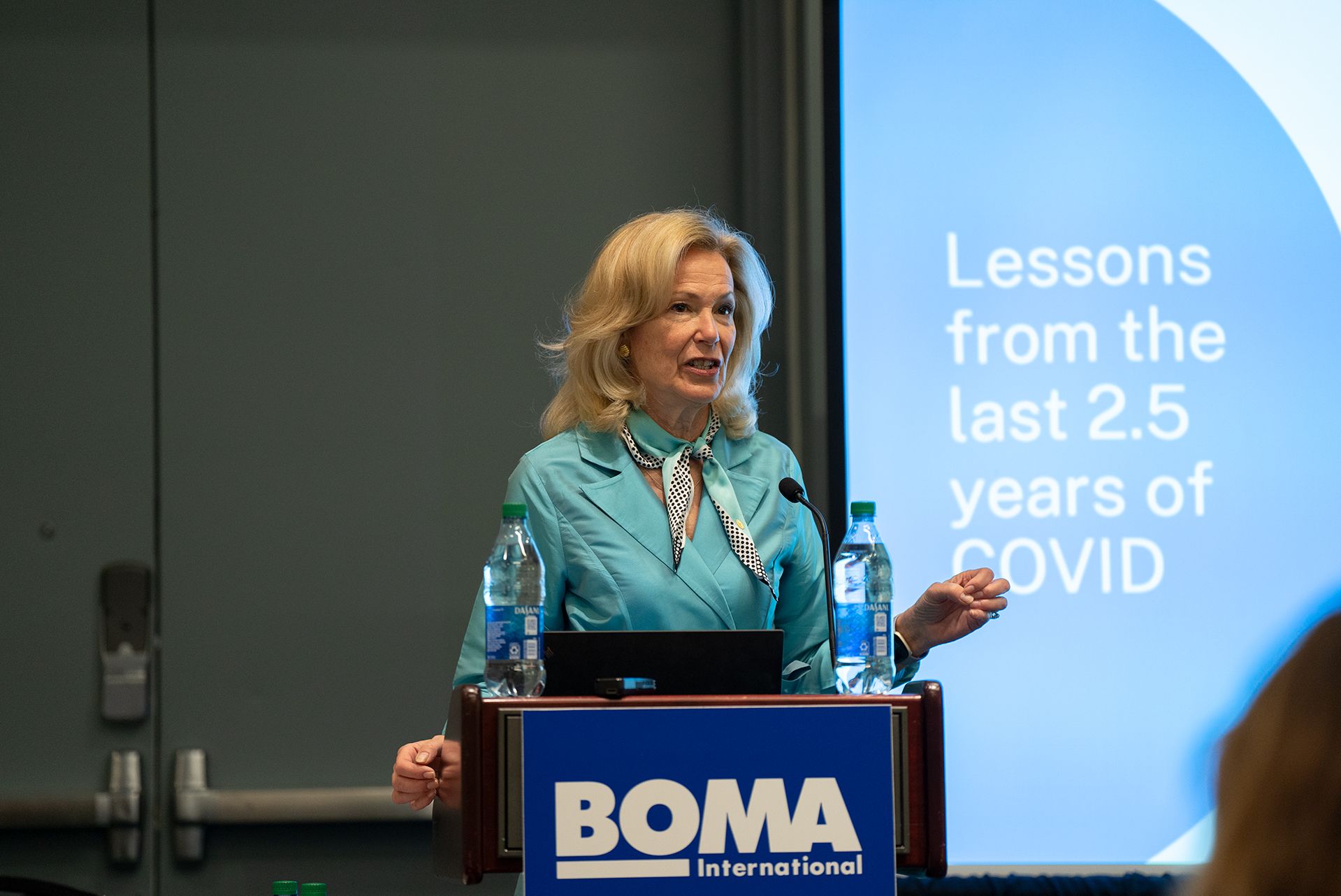
"How we manage our interior air has never been more important."
Dr. Deborah L. Birx posed an interesting question during her education session at the 2022 BOMA International Conference & Expo in Nashville last month: “How much do you not want to get COVID?”
Your response, she said, will guide the protocols you follow.
Birx served on the White House Coronavirus Task Force from February 2020 to January 2021, and she is now chief medical and science advisor at Dallas-based ActivePure Technology.
Her question is particularly critical for property managers and building owners, her colleague Amy Carenza, ActivePure Technology’s chief commercial officer, added. “Your responsibility with respect to interior air and interior comfort essentially brings the issue into your wheelhouse.”
Birx’s session at BOMA 2022 focused on what she and other leaders learned during what now amounts to more than two years of mask-wearing, distance-keeping, hospitalizations and more than one million COVID-related deaths in the U.S.
She brought to light certain truths about the behavior of the virus and its variants.
“We’ve learned that the virus moves in very predictable patterns,” she said. For example, “every variant that moves from Asia or Africa into Europe has arrived in the United States, usually four to eight weeks later.”
Countries such as Great Britain, South Africa and parts of Asia do “an excellent job” of sequencing their variants, Birx said, so they become warning systems for the U.S. “But here’s the takeaway: In the U.S., we do not. But we can use global data to know what’s coming.”
The recent BA.5 variant, an offshoot of omicron, can remain in the air for hours, said Birx. “So even if you walk into an empty conference room or bathroom or breakroom, that’s where infections are happening.”
There also is another predictable pattern to the variants, Birx pointed out. “They constantly try to adapt to us and the immune pressure we’re putting on them through vaccinations and prior infections.”
This makes another revelation especially “shocking,” she said. “Vaccines and boosters were never studied to protect against infection. Those studies were done for approvals, and you had to have symptomatic disease and present those symptoms. So, we had no idea when these vaccines were rolled out if they protected against mild infection.”
But do vaccines and boosters protect you from long COVID? “This is really important in the workplace,” Birx said, “because we’re seeing long COVID from adolescence and every decade up to 90.”
Despite all we know, Birx wondered why many technologies for combating the virus in commercial buildings remain outdated. “It’s time we moved into the 21st century and use the techniques we have available to us today,” she said, citing air disinfection as an example.